Autumn 2017
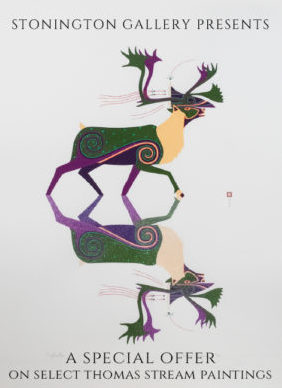 Stonington Gallery has proudly represented the paintings of contemporary Aleut painter Thomas Stream for thirty-five years. Our exhibit schedule and storage capacity is such that not all his wonderful works can be on display at once, and we want them to be in homes where they will be treasured as they deserve! Therefore, we are offering a select collection of original framed paintings from past years at a rare discounted price: 20% off the framing and an additional 20% off the painting.
Stonington Gallery has proudly represented the paintings of contemporary Aleut painter Thomas Stream for thirty-five years. Our exhibit schedule and storage capacity is such that not all his wonderful works can be on display at once, and we want them to be in homes where they will be treasured as they deserve! Therefore, we are offering a select collection of original framed paintings from past years at a rare discounted price: 20% off the framing and an additional 20% off the painting.Thomas Stream’s gouache paintings are a studied and deeply felt tribute to his Aleut heritage and a joyful expression of love to his people. The history of the Aleutian Islands and the Aleuts is a great source of honor and pride for Stream, mixed with sadness at the tragic clash of East and West throughout the 19th and 20th centuries.
Exhibition Dates:
September 29, 2017 - December 25, 2017Involved Artists:
Featured Works
-
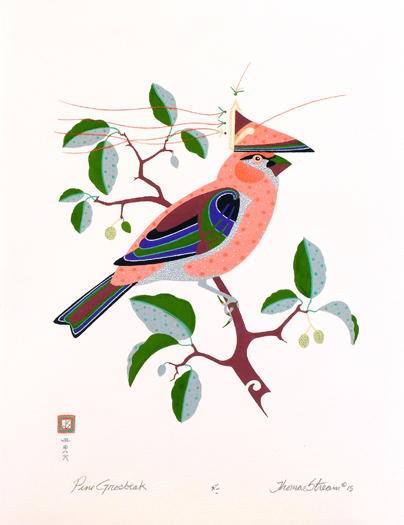 Thomas StreamPine GrosbeakOriginal Gouache on Paper, Conservation Framed
Thomas StreamPine GrosbeakOriginal Gouache on Paper, Conservation Framed- 18.63"h
- 15.63"w
SOLD -
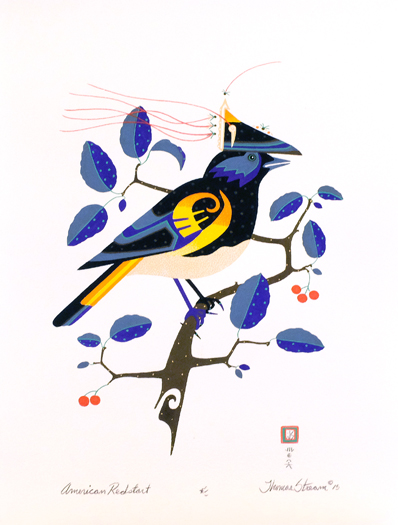 Thomas StreamAmerican RedstartOriginal Gouache on Paper, Conservation Framed
Thomas StreamAmerican RedstartOriginal Gouache on Paper, Conservation Framed- 18.75"h
- 15.63"w
SOLD -
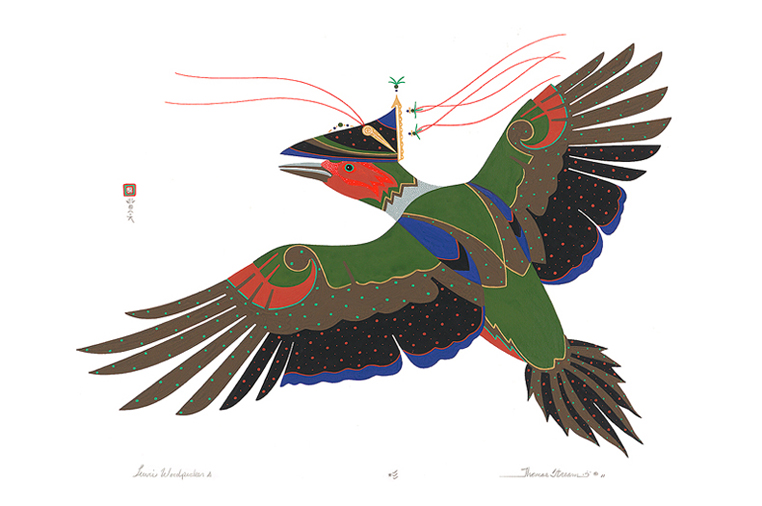 Thomas StreamLewis WoodpeckerLimited Edition Original Gouache Painting, Conservation Framed
Thomas StreamLewis WoodpeckerLimited Edition Original Gouache Painting, Conservation Framed- 24.13"h
- 31.38"w
SOLD -
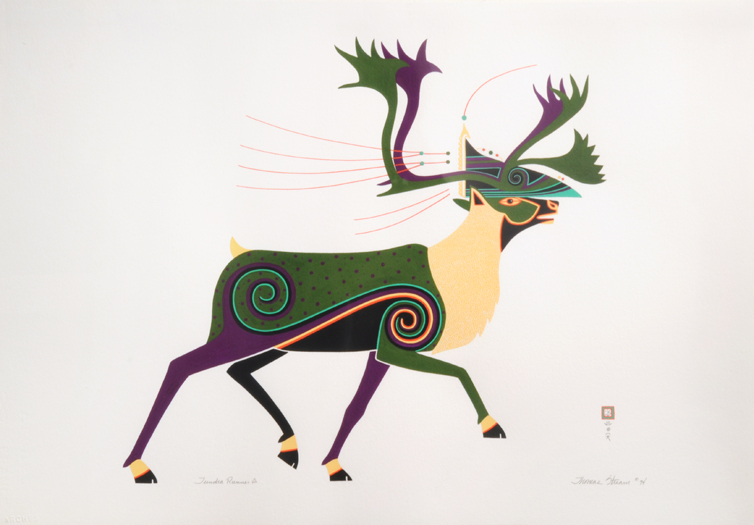 Thomas StreamTundra RunnerLimited Edition Original Gouache Painting, Conservation MattedSOLD
Thomas StreamTundra RunnerLimited Edition Original Gouache Painting, Conservation MattedSOLD -
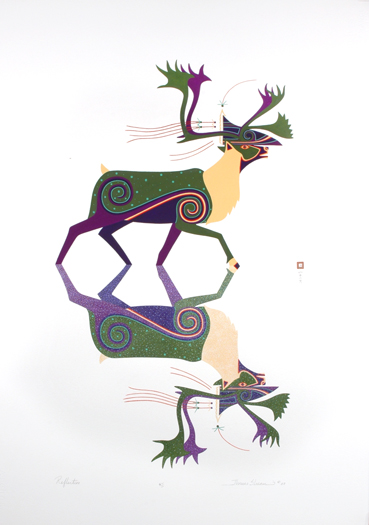 Thomas StreamReflectionOriginal Gouache Painting, Conservation Framed
Thomas StreamReflectionOriginal Gouache Painting, Conservation Framed- 39"h
- 31.25"w
SOLD -
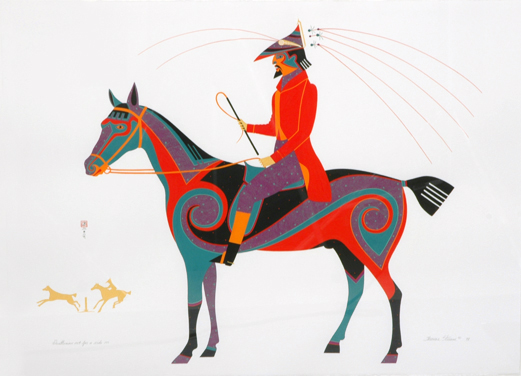 Thomas StreamGentleman Out for a RideLimited Edition Original Gouache Painting
Thomas StreamGentleman Out for a RideLimited Edition Original Gouache Painting- 22"h
- 30"w
SOLD -
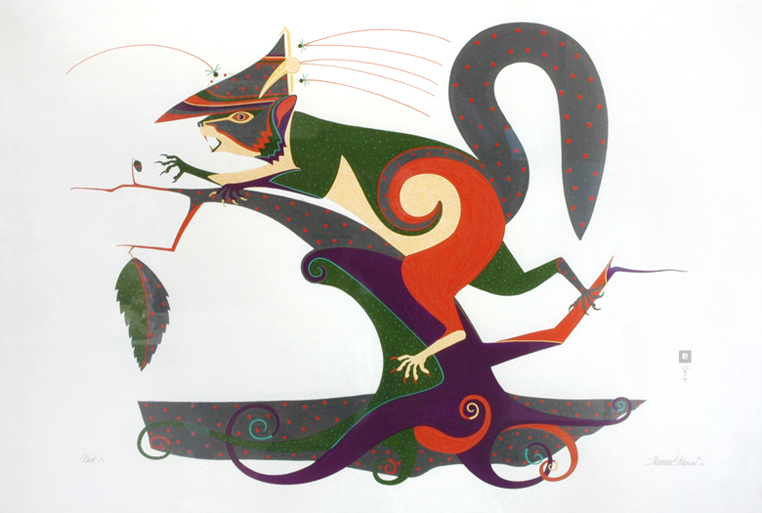 Thomas StreamNutLimited Edition Original Gouache Painting
Thomas StreamNutLimited Edition Original Gouache Painting- 15"h
- 22"w
SOLD -
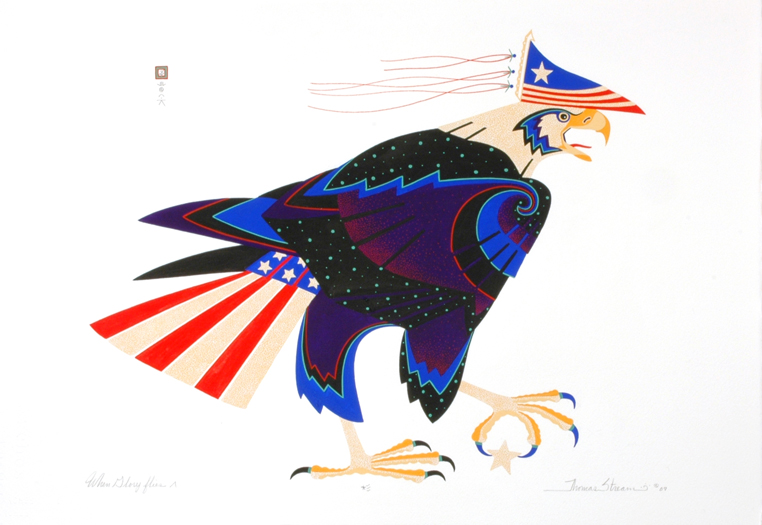 Thomas StreamWhen Glory FliesLimited Edition Original Gouache Painting, Conservation Framed
Thomas StreamWhen Glory FliesLimited Edition Original Gouache Painting, Conservation Framed- 24.13"h
- 31.38"w
SOLD -
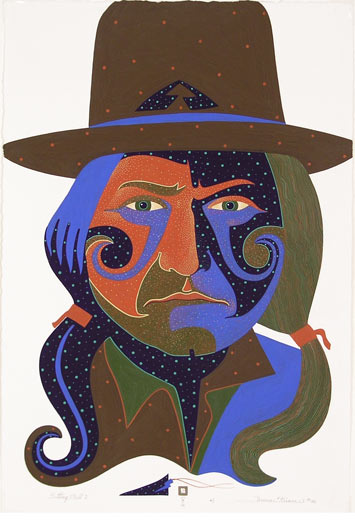 Thomas StreamSitting Bull IIOriginal Gouache Painting, Conservation Framed
Thomas StreamSitting Bull IIOriginal Gouache Painting, Conservation Framed- 31.5"h
- 24"w
SOLD -
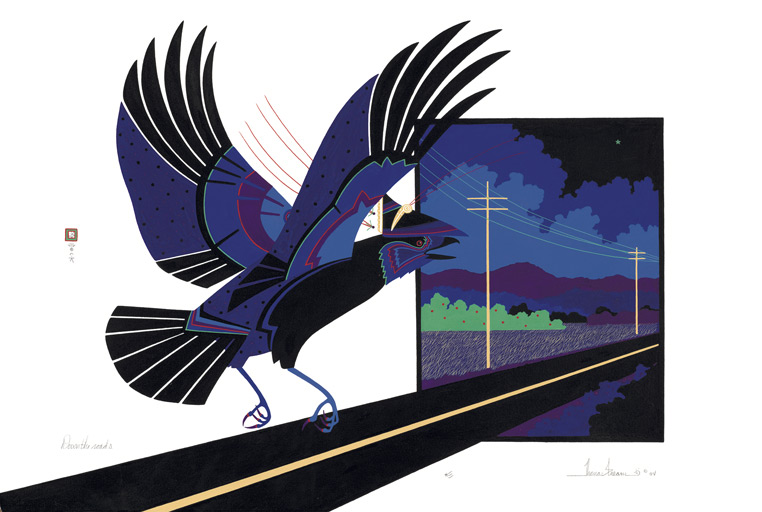 Thomas StreamDown the RoadLimited Edition Original Gouache Painting, Conservation Framed
Thomas StreamDown the RoadLimited Edition Original Gouache Painting, Conservation Framed- 24"h
- 31.5"w
SOLD
About Aleut Hunting Hats:

For Thomas Stream, these noble hats embody the resourcefulness, skill, spirituality and artistry of his people, the Sun’aq Aleut. The Aleutian Island archipelago stretches twelve hundred miles from the southwest corner of Alaska, across the Bering Sea to Russia. The Aleutians are a volcanic chain linking North America to Asia and consist of three hundred islands. The islands are as beautiful as they are remote. They are windswept and barren, with most vegetation growing no higher than twelve inches. It can take a tree two hundred years to reach a height of five feet. Most everything that sustained the Aleut came from the sea, and what came from the sea was fished or hunted by men in their bidarkas or kayaks. Survival depended upon a successful hunt and the Bering Sea/ North Pacific poses formidable risks.
The Aleut enlisted the aid of spiritual powers to help insure a successful and safe hunt. When an Aleut Hunter was preparing for the hunt he would put on this hunting hat, which have been made in the region for over two thousand years. The hat was constructed from split, hand-worked and steam-bent driftwood planks, and adorned with sea lion whiskers, walrus ivory, and trade beads. A man’s hat was as important as his boat and hunting tools. The unique shape of the hats offered protection from sun and rain, and possibly amplified sounds over the water. It was painted with his personal designs and symbols, and it was believed that the hat enabled the hunter to spiritually transform into his prey. Some anthropologists believe that the hats were essentially used as masks, to hide the hunter’s human identity from the animals. In ancient Aleut belief, humans and animals were once in the same family, and at some point they split off from each other.
